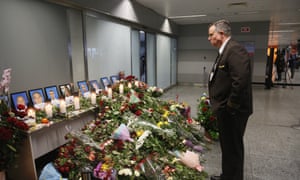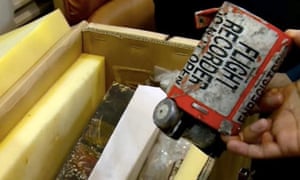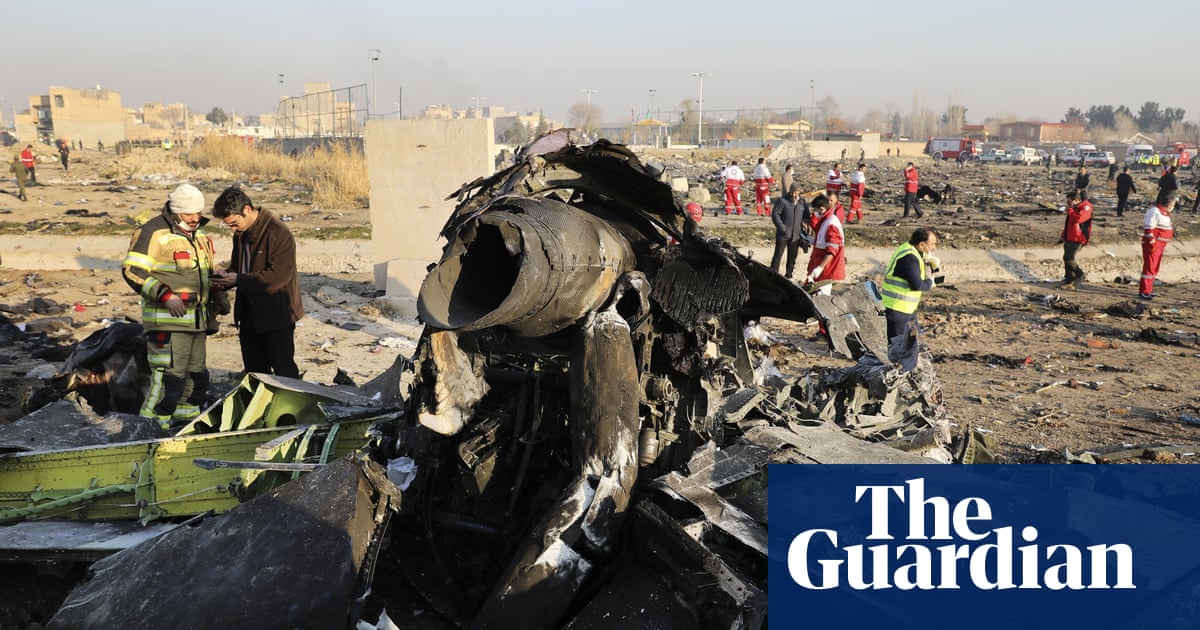There are suspicions in the west, denials in Tehran, grim echoes for Ukraine, and grief spread far and wide

It was still dark when Ukraine International Airlines flight 752 took off on Wednesday from Tehrans Imam Khomeini airport. Onboard were 176 people. Most were returning home after holidays spent with families and friends in Iran. They were couples, newlyweds, students.
A mother and a daughter Sahar Hagjjoo and her eight-year-old child Elsa posed for a photograph together after taking their seats. A sweet one, with the pair relaxed, smiling, a little tired from the early start. Everyone on the plane would have known of the strained diplomatic circumstances swirling before them.
Three days earlier the Trump administration had assassinated the Iranian general Qassem Suleimani in a devastating drone strike, soon after he landed in Baghdad. His killing provoked national mourning in Iran, defiance from the regime and threats of fiery revenge.
Profile
Who was Qassem Suleimani?

Qassem Suleimani, killed by a US drone strike in Baghdad, had become well known among Iranians and was sometimes discussed as a future president. Many considered Suleimani to have been the second most powerful person in Iran, behind supreme leader of Iran Ali Khamenei, but arguably ahead of President Hassan Rouhani. He was commander of the Quds Force, the elite, external wing of the Irans Islamic Revolutionary Guard Corps, which the Trump administration designated as a terror organisation in April last year.
He was born in Rabor, a city in eastern Iran, and forced to travel to a neighbouring city at age 13 and work to pay his fathers debts to the government of the Shah. By the time the monarch fell in 1979, Suleimani was committed to the clerical rule of Ayatollah Ruhollah Khomeini, and joined the Revolutionary Guards, the paramilitary force established to prevent a coup against the newly declared Islamic Republic.
Within two years, he was sent to the front to fight in the war against the invading Iraqi army. He quickly distinguished himself, especially for daring reconnaissance missions behind Iraqi lines, and the war also gave him his first contact with foreign militias of the kind he would wield to devastating effect in the decades to come.
By the the time the Iraq government fell in 2003, Suleimani was the head of the Quds force and blamed for sponsoring the Shia militias who killed thousands of civilian Iraqis and coalition troops. As fighting raged on Iraqs streets, Suleimani fought a shadow war with the US for leverage over the new Iraqi leadership.
Once described by American commander David Petraeus as a truly evil figure, Suleimani was instrumental in crushing street protests in Iran in 2009. In recent months outbreaks of popular dissent in Lebanon, Iraq and Iran were again putting pressure on the crescent of influence he had spent the past two decades building. Violent crackdowns on the protests in Baghdad were blamed on militias under his influence.
Eighteen months before his death, Suleimani had issued Donald Trump a public warning, wagging his finger and dressed in olive fatigues. You will start the war but we will end it.
Retaliation arrived in the shape of Iranian missiles launched against US military bases in Iraq. Rockets crashed into a joint US-Iraqi facility in Erbil, in Kurdish northern Iraq, and at a US airbase in Anbar province. By design or accident, no one was hurt.
In the immediate aftermath of these strikes Irans armed garrisons must have been in a state of jittery high alert, wondering what the volatile Donald Trump might do next. Another US attack against domestic Iranian targets? A pause? Something else?
It was against this war-like backdrop that the plane took off at 6.12am. It climbed rapidly, reaching almost 8,000ft (2,400 metres). Its destination was Ukraines capital, Kyiv. From there most passengers were heading off elsewhere. More than a third were Iranian Canadians, going to Toronto or Edmonton.
Four British nationals were connecting to London. They included Mohammad Reza Kadkhoda-Zadeh, who ran a dry cleaning business in Hassocks, West Sussex; Sam Zokaei, a BP employee and Saeed Tahmabessi, an engineer.
The plane would have appeared on the radar screen of Irans Mehrabad air traffic control centre, which cleared the crew to ascend to 26,000ft. Staff should have identified the Boeing 737-800 plane as a regular civilian jet.
Also tracking the skies over Tehran were American satellites. If further missiles were hurled at US targets in Iraq the USs Space-Based Infrared System would immediately detect them.
At 6.15am the system picked up something ominous: the unmistakable heat signature of missiles freshly launched.
An Iranian garrison on the ground, due west of the airport, appears to have mistaken the plane for a hostile American object. According to US officials, an Iranian anti-aircraft battery unleashed two Russian-made missiles. The US satellites recorded an infrared blip: an explosion.
The results were immediate and catastrophic.
Mobile phone footage captures the moment of impact: a white flash, flaring across the inky heavens. Twenty four seconds later the sound arrives a boom and martial roar. Down on earth a dog barks. Further footage shot from a different standpoint shows the stricken plane hitting the ground, a burst of orange.
The missiles would have exploded adjacent to the plane, sending a deadly hail of shrapnel into the fuselage. The pilots made a doomed attempt to turn back, judging from the position of wreckage strewn across Tehrans outskirts. Take-off to crash landing was five minutes. The journeys last moments must have been ones of terror.
As dawn broke, rescuers found an awful scene. Bodies, personal belongings, parts of the wing, oxygen masks were scattered over farmland. The dead were put into plastic sacks. As Washington, Ottawa, Kyiv and London demanded answers, and relatives began to grieve, the Iranian authorities said the incident was a tragic case of mechanical mishap.
There were early hints, however, that this version of events might not be quite true. Ukrainian investigators and western journalists reported seeing men in uniform remove fragments of the plane. A bulldozer began to clear the site. Iran said it would not hand over the black box to foreign experts. This was damaged but intact.
Meanwhile, photographs circulated on social media showing what looked like a missile head with cone and fins lying in a nearby drainage ditch. A compelling clue or fake news? Initially, Ukraines president, Volodymyr Zelenskiy, said the plane had crashed as a result of an accident. Within hours, his government deleted this statement.
Behind the scenes, western governments were carefully picking over the satellite record. It confirmed that the Revolutionary Guards Parandak garrison had used a short-range Tor-M1 missile system to bring down the plane. Seemingly, its nervous operators had confused it with a US military jet. Or a reconnaissance drone.
In 2005 Tehran bought 29 Tor-M1s from Moscow. They consist of a missile launcher and radar in a single tracked vehicle. The weapon system is highly effective against short-range targets, with a range of 7.5 miles (12km), up to an altitude of 20,000ft.
For Ukraine, these details were a grim echo of six years ago. In summer 2014, as part of a covert invasion, the Russian military smuggled a Buk missile launcher into rebel-held eastern Ukraine. Its Russian crew accidentally shot down an overflying civilian plane, Malaysian airlines flight MH17, killing all 298 people onboard.
Dutch and international investigators subsequently confirmed Russias role. Moscow rejected this. Ever since it has offered implausible counter-versions.

It was clear that Tehran was going down the same road of denial. The head of Irans civil aviation organisation said it was scientifically impossible that a missile could have hit the Ukrainian plane. Such rumours were illogical, Ali Abedzadeh told state-run media. In London, Irans ambassador to the UK, Hamid Baeidinejad, accused the west and the UK of politicising the inquiry.
Such assertions failed to convince.
Western security officials began briefing on Thursday afternoon they suspected the plane had been accidentally shot down by an Iranian missile. Then Canadas prime minister, Justin Trudeau, made a sombre statement saying his country wanted transparency and an honest reckoning. We have intelligence, including from our allies and own intelligence,that the plane was shot down by Iranian surface-to-air missiles, Trudeau said.
By Friday the international consensus was clear. Iran had shot down flight 752 and now seemed determined to cover up much of the evidence. Boris Johnson said a body of information confirmed Trudeaus analysis. Zelenskiy spoke with the US secretary of state, Mike Pompeo, and confirmed US officials had passed on important data.

The US president who had ramped up conflict with Iran seemingly stepping back this week from full-scale war said he had suspicions about the crash. Its a tragic thing somebody could have made a mistake on the other side, Trump said.
The question of who bore ultimate responsibility for Wednesdays disaster was murky. Months of accusation and counter-accusation are now likely. What is clear is that Trumps decision to assassinate Suleimani had terrible unintended consequences.
It set off a tragic chain of events, culminating in a disaster in which the victims were innocent civilians. In a region as bloody and unpredictable as the Middle East, further such episodes will surely follow.


Recent Comments